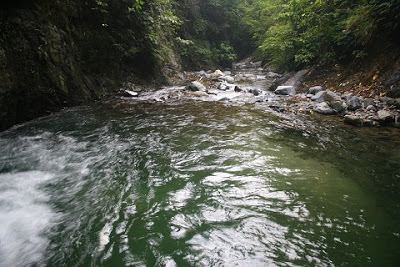Founded July 21, 1949 Time zone PST (UTC+8) Local time Wednesday 4:27 AM | District Lone District Barangays Area 426.2 km² | |
 | ||
Weather 26°C, Wind NE at 8 km/h, 88% Humidity | ||
Balete tree in maria aurora aurora province
Maria Aurora, officially the Municipality of Maria Aurora (Filipino: Bayan ng Maria Aurora; Ilocano: Ili ti Maria Aurora), is a municipality in the province of Aurora in the Central Luzon (Region III) of the Philippines. The population was 40,734 at the 2015 census, making it the most populous municipality in the province. In the 2016 electoral roll, it had 23,341 registered voters. It is the only landlocked town of the province.
Contents
- Balete tree in maria aurora aurora province
- Map of Maria Aurora Aurora Philippines
- History
- Proposal for Dr Juan C Angara municipality
- Geography
- Barangays
- Demographics
- Government
- Transportation
- Health
- Education
- References
Map of Maria Aurora, Aurora, Philippines
The Millennium Tree in Balete Park and the lush green landscape is Maria Aurora's main tourist asset.
History
The town was named after Maria Aurora Aragon Quezon, the first daughter of Philippine President Manuel L. Quezon and First Lady Aurora Aragon Quezon. Maria Aurora along with her mother Aurora was ambushed by elements of the Hukbalahap movement in Nueva Ecija. The municipality of Maria Aurora was formed on July 21, 1949, through the Executive Order No. 249 out of various portions of the municipalities of Baler and Infanta, both of which were part of Quezon Province.
Proposal for Dr. Juan C. Angara municipality
A separate municipality called Dr. Juan C. Angara is being proposed under Senate Bill No. 3132 and House Bill No. 6518. The proposed municipality shall have a land area of 201.2 square kilometers and is composed of western barangays of Dianawan, Decoliat, Galintuja, San Juan, Suguit, Bazal, Pungio, Villa Aurora and Dialatnan. San Juan will serve as poblacion or the seat of government.
Geography
Maria Aurora is located at 15°47′N 121°28′E.
According to the Philippine Statistics Authority, the municipality has a land area of 426.19 square kilometres (164.55 sq mi) constituting 7001135400000099999♠13.54% of the 3,147.32-square-kilometre- (1,215.19 sq mi) total area of Aurora.
Maria Aurora is the only non-coastal municipality of the province. It is bounded by Baler and Dipaculao on the east, San Luis on the south, the Province of Nueva Ecija on the west and the Province of Nueva Vizcaya on the north-west.
Barangays
Maria Aurora is politically subdivided into 40 barangays.
Demographics
In the 2015 census, Maria Aurora had a population of 40,734. The population density was 96 inhabitants per square kilometre (250/sq mi).
In the 2016 electoral roll, it had 23,341 registered voters.
Government
Maria Aurora was administered by 12 mayors since its establishment in 1949.
Transportation
Maria Aurora can be accessed by road through two routes: the Canili–Pantabangan Road, which passes Nueva Ecija's northern towns and through Alfonso Castañeda, Nueva Vizcaya; and the Nueva Ecija–Aurora Road, built on the 1940s that traverses the Sierra Madre Mountains and passes through the towns of Baler and San Luis. Today, the Canili–Pantabangan Road is much more commonly used, though it extends travel time for 1 hour, it is the safest route for vehicles. Originally, the Nueva Ecija–Aurora Road is the standard road for bus commuters, the shortest but the steep turns and unpaved roads makes it the most dangerous for heavy vehicles.
There are five bus lines that serve Maria Aurora's vicinity: Maria Aurora Express (PAPIN) (Cabanatuan–Dipaculao); D' Liner (CabanatuanBaguio - Maria Aurora, Casiguran; Genesis Bus Transport (ManilaCabanatuan - Baler); - Aurora Bus Line (Cabanatuan - Baler) and Lizardo Transit (Baguio - Baler)
Health
The Department of Health sustains health over the municipality. The municipality has 21 health centers and one provincial hospital, the Aurora Provincial Hospital located in barangay Buhangin in Baler, 30 kilometers south of the town.
Education
Maria Aurora has its education sustained by the Department of Education - Division of Aurora. The municipality has 38 public elementary and high schools with 1 central school (Maria Aurora Central School). Private institutions in the municipality include the Wesleyan University - Philippines and Mount Carmel School of Maria Aurora.
